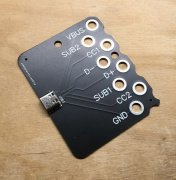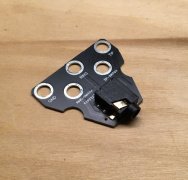Connectors & Sockets in miniTesla: build electronics and more
Authors
Products
Raspberry Pi Pico breakout board
miniTesla
With this breakout board, it is very easy to integrate a Raspberry Pi Pico microcontroller into your miniTesla project. Simply snap an RPI Pico without any soldered headers into the Clipzin socket. A reset button is already on the board, as is a 4-pin female header connected to the default I2S channel with four connections (GND, 3.3V, SCL, SDA). You can, for example, plug a small OLED screen into this header.
This board does not include an RPi Pico.
Why not get this Pico breakout board to build your own Test Lab that includes all the important testing equipment an electronics lab needs: multimeter,...
BNC Connector
miniTesla
A BNC connector is one common choice to connect a coaxial cable. It is often used in lab setups because the connection can be established or broken with one quick turn of the hand.
Because there are pins and wires protruding at the underside of the PCB, you can only use this sub-board at the edge of the pegboard. See the additional photos.
Screw Terminal Block
miniTesla
Screw terminals are very useful for all kinds of applications. They can be used to connect wire antennas, and are convenient in combination with Lego Technic pieces to connect the ends of coils wound on Lego coil formers. See the manual for further details.
Transistor Socket
miniTesla
Transistors can be incorporated into the miniTesla system without a socket. You bend the legs to the side and clamp them at the top of the spring contacts (see the manual for instructions). However, a more convenient way is to use this socket. It is a small female header with a hole spacing of 1.27 mm (0.05") arranged in two rows with 5 contacts each. The outer four contacts on each side are electrically connected, as are the two middle contacts. This allows you to insert transistors with leads spaced at 2.54 mm (0.1") or spaced at 1.27 mm (0.05").
14-pin DIP
miniTesla8-pin DIP
miniTesla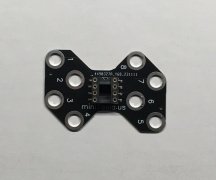
Some of the most popular chips come in 8-pin, arranged as 2 rows of 4 pins, DIP packaging. Think about the famous 555 timer chip or dual-operational amplifiers such as the LM358. You can also find comparators (LM393) and audio amplifiers (LM386). You can put two optocouplers (PC817) into the socket. Some microcontrollers such as the ATtiny85, PIC12F1840, or PICAXE-08M2 also fit. There are H-bridges to control motors (L9110), tone decoders (LM567) that can also be used to demodulate AM and FM signals, and a lot more.
You are not limited to only inserting integrated circuits. Other component...
2.1 mm Female Barrel Connector
miniTesla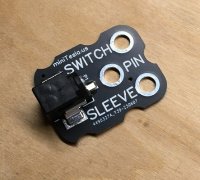
The most widely used barrel connector is the 2.1 mm one. They are often used for low-voltage power supplies and wall adaptors. You will probably have several of these lying around from old or broken toys and other equipment. They make great power supplies for various projects. This sub-board allows you to easily connect them to the miniTesla system.
This one has a plug insertion detection, a switch that is closed and thus connected to the sleeve if no plug is inserted. Once a plug is inserted this switch opens. This is useful to automatically switch between battery operation, when no plug...
Spring Contact (Package of 20)
miniTesla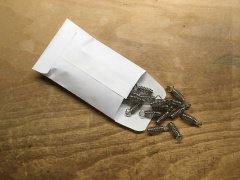
These are the crucial miniTesla spring contacts. They are the connecting elements that allow mechanical as well as electrical connection of electric components. This package includes 20 of them.
They are inserted in 5 mm holes of pegboards about 1/8" (~3 mm) thick. They can be inserted and removed with your fingers but a better removal tool is a 1.75 mm (No. 0) crochet hook. Please refer to the manual for details.
To clamp wires use your fingers or our compression tool.
These spring contacts also fit perfectly into half-height (thin) Lego technic beams. One can construct a little pegboard purely from thin Lego...






















